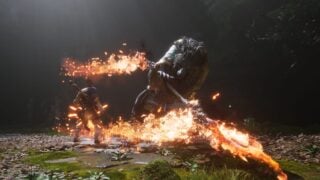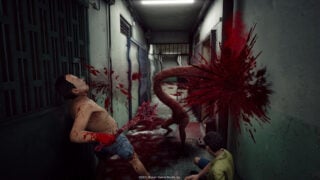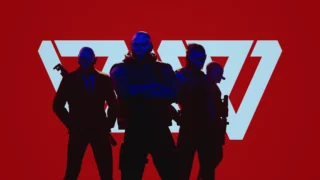Hands-On: Black Myth: Wukong is frantic, hard as nails and visually stunning
Leave your Soulslike expectations at the door for this journey through Chinese mythology

When the first footage of Black Myth: Wukong was shown, it was one of the few games that seemed to scream “next-gen”.
While there have been plenty of games that are visual powerhouses, something about that initial 2020 trailer for the game seemed different. Now, four years and an entire engine upgrade later, we’ve played it – and it looks (and plays) even better than that original trailer all those years ago.
“Back in 2020, we were using Unreal Engine 4,” a spokesperson from developer Game Science told us. “We’re going for a super realistic style. We want players to feel like they’re in those scenic spots.
“In 2021 we moved to Unreal Engine 5, which helped us in our pursuit of realism. We used mo-cap and scanning technology to create a very real environment. A lot of players find the game to be very beautifully made.
“To be honest, in the genre of action RPGs there are not too many games that feature realistic and natural Chinese environments.”
We played through an early section of the game, set in lush Chinese forests. The level of detail and realism of the foliage is right up there with – or in some scenes more impressive than – anything else on the market today.
The term ‘tech demo’ is usually a dismissive one, but in this case it feels more like Unreal Engine 5 gloating about just how impressive it can be. Enemies, similarly, are hugely detailed. Their clothing, attack animations, and the way they react to your movements as a player, are all incredibly high quality.
In a later boss fight, both the player and boss move through ankle-high water, which deforms and reacts exactly how you would expect it to. There are moments where you’re brought out to a vista to meditate, which seems to largely serve as a moment to show off the graphics.
It’s perhaps unsurprising, then, that the team is seemingly struggling to get the game to run properly on the Xbox Series S, a requirement from Microsoft that is precluding Game Science from launching on PC, PS5 and Xbox simultaneously. Instead, just the PC and PS5 versions of the game will be released in August.
All that visual flair would be pointless without rock-solid gameplay, and we’re happy to report that Black Myth: Wukong has it in spades.
“While the ability to use the weapons of your slain foes is a concept that is common to games in this genre, taking on the full body proportions and movement of that boss is a novel approach, that adds extra stakes to the fight.”
When we first sat down to play the game, we were expecting a fairly standard Soulslike. We were looking to parry enemies, angle around them for a backstab, roll and roll, and roll and roll again, but we were wrong. Black Myth: Wukong’s approach to combat is far more aggressive and fast-paced than that of its Souls-y cousins, even if some of the levelling mechanics and difficulty are shared.
Instead of dodge rolling, the player is aiming to dodge at the last possible second before the enemy attacks. Doing this leaves a ghost of the player for the enemy to focus on, while the player lays into their foe from the sidelines. Once we got the timing down for the perfect dodges, fights became a violent ballet of pirouetting around the various demons that were trying to take us down.
This also applies to boss fights, with some bosses requiring multiple perfect dodges in a row to find the opening that you need to attack. The philosophy appears to be one of always attacking, and never defending.

“We want the player to feel like a hero.” said the spokesperson from Game Science. “This game is based on Journey to the West, and in the novel when the Monkey King fights his enemies, it’s a battle between immortals. They both have transformations and spells, it’s almost like a performance.”
Wukong’s combat goes into a higher gear when, after defeating an early boss, the player is then able to briefly transform into that boss to defeat them. These transformations come complete with that boss’s move-set, meaning that the dash attack you’ve been screaming at for hours suddenly becomes your deadliest weapon.
The game is punishing, but never felt unfair during our session. The player is given a generous amount of healing potential, and it seemed like just about every attack could be dodged, if you’re good enough.
“Wukong’s combat goes into a higher gear when, after defeating an early boss, the player is then able to briefly transform into that boss to defeat them.”
“You can’t change the difficulty, but the difficulty doesn’t remain the same for the whole game,” we were told. “As we said earlier, the philosophy is that players fight like a hero. When we were developing the game we had to make a lot of hard choices.
“The route we chose was to make the player have lots of tries so that after each battle they could think about what is the best combat method for this fight specifically.”
We certainly preferred the boss battles with the human-ish-sized foes rather than those with the larger, less predictable beasts, but that’s a largely personal preference.

The early section we played through was also absolutely rammed with boss fights. While an ideal environment to demo the game and give players a sense of the combat, at times it felt like there were literally 90 seconds between boss encounters. The lack of mindless mobs in between to practice on is a choice we’re conflicted about.
On one hand, is practicing on a simple enemy that does one readable attack all that helpful? On the other hand, the struggle up to a boss room is a time-honored staple of this genre. That feeling of making your way through an area with only the faintest glimmer of health left, only to be greeted with a huge health bar and a sense of dread.
We’re keen to see how this manifests in the full game, and how many of the game’s bosses we’ll be able to transform into. The game has nailed the visuals, and based on the PC version that we played, runs splendidly. Can it keep up the streak of incentive bosses we found in the demo for a full-length title? We’ll find out in August.




















